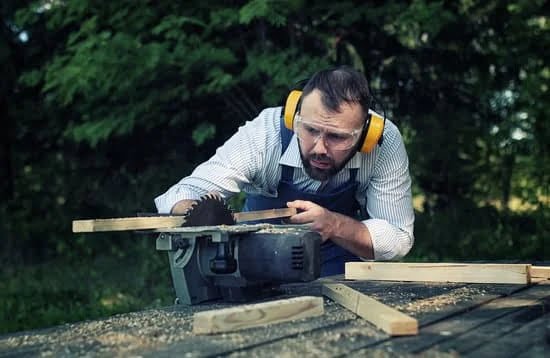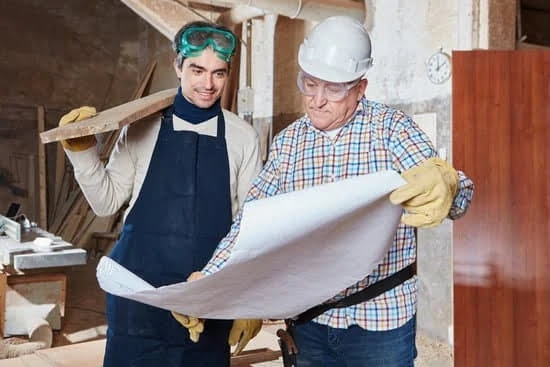Are you struggling with how to measure for woodworking projects? Accurate measurements are crucial for successful woodworking, as even the slightest error can lead to flawed designs and wasted materials. In this article, we will delve into the importance of precise measurements in woodworking projects and provide a comprehensive guide on how to measure accurately. Whether you’re a beginner or an experienced woodworker, mastering the art of measuring is key to producing high-quality and professional results.
Woodworking relies heavily on precise measurements, making it essential to have the right tools at your disposal. From tape measures and combination squares to marking gauges and more, we will explore the essential tools required for accurate measurements in woodworking. Additionally, we will discuss common mistakes to avoid when taking measurements and provide tips for measuring different types of wood and materials.
Our step-by-step guide will walk you through the process of measuring accurately for woodworking projects, emphasizing the importance of precision and detailing how to double-check and verify measurements before cutting. By understanding the impact of accurate measurements on the overall quality of woodworking projects, you’ll be better equipped to achieve exceptional results in your creations. So let’s dive in and master the art of measuring for woodworking projects.
The Essential Tools for Measuring in Woodworking
Woodworking requires precise and accurate measurements to ensure the success of any project. To achieve this, it is essential to have the right tools for measuring. The most common tools used in woodworking projects include the tape measure, combination square, marking gauge, and more.
The tape measure is a staple tool in woodworking as it allows for quick and easy measurements of long distances. It is important to choose a durable and reliable tape measure with clear markings for accurate readings. The combination square is another crucial tool that can be used for both measuring and marking right angles. Its versatility makes it an essential tool for ensuring accuracy in woodworking projects.
In addition to these tools, a marking gauge is useful for creating straight lines and ensuring consistent measurements. Other essential measuring tools for woodworking include a ruler, calipers, and a level. Each of these tools serves a specific purpose in achieving accurate measurements for woodworking projects.
Understanding how to use these measuring tools effectively is key to achieving precision in woodworking. Knowing how to read and interpret measurements, as well as using the appropriate tool for each specific task, will ultimately lead to successful woodworking projects.
| Measuring Tool | Purpose |
|---|---|
| Tape Measure | Quick and easy measurements of long distances |
| Combination Square | Measuring and marking right angles |
| Marking Gauge | Creating straight lines and ensuring consistent measurements |
Step-by-Step Guide on How to Measure Accurately for Woodworking Projects
When it comes to woodworking, accurate measurements are crucial for ensuring that your projects turn out as intended. Whether you are building furniture, cabinets, or other wood items, precision in measurement can make the difference between a successful project and a disappointing one. In this section, we will provide a step-by-step guide on how to measure accurately for woodworking projects.
Choosing the Right Measuring Tools
The first step in measuring accurately for woodworking projects is to ensure that you have the right tools for the job. A tape measure, combination square, marking gauge, and straight edge are essential tools for taking precise measurements. It’s important to invest in high-quality measuring tools to ensure accuracy in your woodworking projects.
Understanding Measurement Techniques
Before you start taking measurements, it’s important to understand the various techniques used in woodworking. This includes measuring for length, width, and depth as well as understanding how to account for joinery and other factors that may affect the final dimensions of your project. Familiarize yourself with techniques such as inside and outside measurements, as well as methods for measuring angles and curves.
Double-Checking and Verifying Measurements
Once you have taken your measurements, it’s crucial to double-check and verify them before making any cuts. This can be done by comparing measurements with different tools or by taking multiple measurements from different reference points. By double-checking your measurements, you can avoid costly mistakes and ensure that your woodworking project turns out exactly as planned.
Common Mistakes to Avoid When Taking Measurements in Woodworking
When it comes to woodworking, accurate measurements are crucial for the success of any project. However, there are common mistakes that can lead to incorrect measurements and ultimately affect the quality of your work. By being aware of these pitfalls, you can ensure that your woodworking projects are based on precise measurements.
Using an Old or Faulty Measuring Tool
One common mistake in woodworking is relying on a measuring tool that is old or faulty. Over time, tape measures and other tools can become worn out, lose their accuracy, or get damaged. It’s important to regularly check and replace your measuring tools to ensure the accuracy of your measurements.
Not Accounting for the Width of the Marking Tool
When using marking tools such as pencils or knives in woodworking, it’s crucial to account for their width when marking measurements. Failure to do so can result in inaccurate cuts and joints. Always remember to consider the width of your marking tool when making measurements on wood.
Relying Solely on One Measurement
Another mistake is relying solely on one measurement instead of taking multiple measurements from different angles and directions. Different parts of a piece of wood may not be perfectly straight or square, so taking multiple measurements will help ensure accuracy in your woodworking projects.
By being mindful of these common mistakes and taking the necessary precautions, you can avoid inaccuracies in your woodworking measurements and achieve greater precision in your projects. Remember that attention to detail and precision in measurements will have a significant impact on the overall quality of your woodworking work.
Tips for Measuring Different Types of Wood and Materials
Woodworking projects often involve working with a variety of different types of wood and materials, each with their own unique characteristics and properties. It is crucial to understand how to measure these different materials accurately in order to ensure the success of your woodworking project. Here are some tips for measuring different types of wood and materials:
- Consider the grain: When measuring wood, take into account the direction of the grain. For accurate measurements, it’s best to measure perpendicular to the grain to avoid any potential variations in width or thickness.
- Use specialized tools: Some materials may require specific measuring tools. For example, when measuring sheet goods such as plywood or MDF, using a straight edge or T-square can help ensure precise measurements.
- Account for material density: Different types of wood and materials vary in density, which can affect measurements. Be mindful of this when taking measurements and adjust as necessary to accommodate for differences in density.
Accurate measurements are essential for successful woodworking projects, especially when working with various types of wood and materials. By understanding the specific considerations for measuring different materials, you can ensure that your woodworking project is built with precision and attention to detail.
To learn more about how to measure for woodworking projects visit our website (insert link) where we have additional resources available. Whether you are a beginner or experienced woodworker, properly measuring different types of wood and materials is crucial for achieving high-quality results.
Understanding the Importance of Precision in Woodworking Measurements
Precision in measurements is a crucial aspect of woodworking projects, as even the slightest error can lead to costly mistakes and rework. By understanding the importance of precision in woodworking measurements, you can ensure that your projects turn out as intended and meet the highest standards of quality.
The first step in ensuring precise measurements for woodworking projects is to have the essential tools on hand. A tape measure, combination square, marking gauge, and other measuring tools are essential for accurately gauging the dimensions of wood and materials. These tools enable woodworkers to take precise measurements and make accurate markings for cuts and joinery.
When considering how to measure for woodworking projects, it’s important to follow a step-by-step process to achieve accurate results. This involves ensuring that the measuring tools are properly calibrated, taking measurements at multiple points to account for any inconsistencies in wood or materials, and using marking techniques that allow for clear and precise lines.
To further emphasize the significance of precision in woodworking measurements, it’s crucial to double-check and verify all measurements before making any cuts. This extra step can prevent potentially irreversible mistakes and ensure that each component fits together seamlessly during assembly.
These strategies for achieving precision in woodworking measurements contribute greatly to the overall quality of your projects. Taking the time to measure accurately not only improves the aesthetic appeal of your creations but also enhances their structural integrity and longevity. By prioritizing precision in your measurements, you can elevate the level of craftsmanship in your woodworking endeavors.
| Woodworking Measurement Tools | Tape Measure, Combination Square, Marking Gauge |
|---|---|
| Precision Importance | Crucial for accuracy and quality of projects |
| Double-Check Measurements | Avoids costly mistakes before making cuts |
How to Double-Check and Verify Measurements Before Cutting
When working on woodworking projects, it is crucial to ensure that measurements are accurate before making any cuts. Failing to double-check and verify measurements can lead to costly mistakes and rework. Therefore, taking the time to confirm the accuracy of your measurements is a crucial step in the woodworking process.
To double-check and verify measurements before cutting, there are several methods and tools that can be utilized:
- Using a combination square to check for squareness and make sure that your workpiece is properly aligned.
- Utilizing a marking gauge to transfer precise measurements from one piece of wood to another.
- Comparing measurements with multiple tools such as tape measure, ruler, or calipers to ensure consistency.
It is important to remember that precision is key when it comes to woodworking, so taking the time to double-check and verify measurements will ultimately save you time and frustration down the line. By implementing these methods, you can significantly reduce the chances of errors in your woodworking projects.
Lastly, it is essential to have a systematic approach to double-checking and verifying measurements. Creating a checklist or standard operating procedure for this process can help ensure that no steps are missed and that each measurement is thoroughly reviewed before proceeding with any cuts or joinery.
By following these steps, woodworkers can maintain a high standard of accuracy in their projects and avoid costly errors. Ensuring precise measurements before cutting will ultimately lead to a higher quality end product that meets the intended design specifications.
The Impact of Accurate Measurements on the Overall Quality of Woodworking Projects
Accurate measurements are crucial in woodworking projects, as they directly impact the overall quality of the final product. When measurements are imprecise or incorrect, it can lead to misaligned joints, uneven edges, and an overall lack of symmetry in the finished piece. Understanding the impact of accurate measurements on woodworking projects is essential for ensuring successful and professional-looking results.
One of the key aspects of achieving precise measurements in woodworking is using the right tools. Tape measures, combination squares, marking gauges, and other measuring instruments are indispensable for obtaining accurate dimensions and angles. These tools not only help woodworkers measure lengths and widths but also ensure that angles are square and cuts are clean and precise.
In addition to using the right tools, following a step-by-step guide on how to measure accurately for woodworking projects is essential. It involves techniques such as measuring from a consistent reference point, avoiding parallax errors when reading measurements, and accounting for wood movement due to changes in humidity.
By following these guidelines, woodworkers can minimize measurement errors and produce high-quality workpieces. Understanding how to measure for woodworking projects not only ensures precision but also sets a strong foundation for creating well-crafted pieces that stand the test of time.
Conclusion
In conclusion, mastering the art of precise measurements is crucial for achieving successful woodworking projects. As highlighted throughout this article, accurate measurements are essential for ensuring that wood pieces fit together seamlessly, angles are precise, and dimensions are correct. By understanding the importance of precision in woodworking measurements, individuals can elevate the quality of their projects and avoid costly mistakes.
Learning how to measure for woodworking projects involves more than just using the right tools; it also requires patience, attention to detail, and a commitment to double-checking and verifying measurements before making any cuts. The step-by-step guide provided in this article offers valuable insight into the proper techniques for measuring different types of wood and materials, as well as common mistakes to avoid.
By following these guidelines, woodworkers can significantly improve the accuracy and overall quality of their creations.
Ultimately, embracing the significance of accurate measurements not only enhances the craftsmanship of woodworking projects but also saves time and resources by reducing errors and rework. Precision in measuring is a foundational skill that sets the stage for successful woodworking endeavors, making it a worthwhile investment to master. Whether you’re a beginner or seasoned woodworker, incorporating these tips and techniques into your practice will undoubtedly lead to more impressive and professional-looking results in your woodworking projects.
Frequently Asked Questions
How Do You Measure Accurately Carpentry?
Accurate carpentry measurement can be achieved through the use of a combination square, which allows for precise marking and measuring of angles and lengths. This tool ensures that cuts and joints are accurate, resulting in well-fitted woodwork.
What Does a Carpenter Use to Take Measurements?
Carpenters use various tools to take measurements, such as tape measures, rulers, and straight edges. These tools enable them to accurately determine the dimensions of wood pieces needed for a project, ensuring that everything fits together properly.
What Is the Most Often Used Measuring Tool in Woodworking?
The most often used measuring tool in woodworking is the tape measure. Its flexibility and portability make it a versatile instrument for taking both short and long measurements. Carpenters rely on this tool for its convenience and accuracy when working with wood.

Hi everyone! I’m a woodworker and blogger, and this is my woodworking blog. In my blog, I share tips and tricks for woodworkers of all skill levels, as well as project ideas that you can try yourself.





